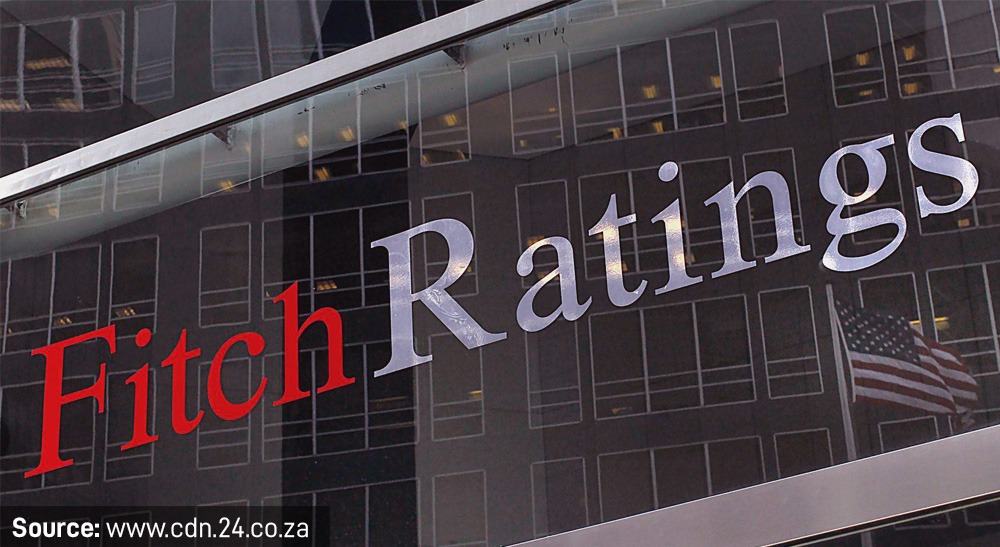Fitch Ratings disagrees with National Treasury’s forecast that government debt will be brought under control this year.
The Budget Overview published last week states that the gross debt-to-GDP ratio will hit its highest point this fiscal year (2025/26) at 77.4%. This is an upward revision from the 76.2% forecast in the second version of the Budget, in March.
Fitch Ratings, however, foresees that government debt will continue to climb for the next two years. The rating agency estimates debt will rise to 78.4% of GDP, or 79.5% including local government debt, by 2026/27.
In a statement on Friday, Fitch said it did not foresee government debt stabilising yet, although the pace of debt accumulation will decelerate to 0.8 percentage points this year and 0.7 percentage points next year, compared with 2.7 percentage points in 2024/25.
“The government debt trajectory remains a key sensitivity for the sovereign rating,” said Fitch, which recently maintained South Africa’s long-term foreign and local currency debt ratings at BB- (three notices below investment grade) with a “stable” outlook.
National Treasury forecasts a budget deficit of -4.8% of GDP in 2025/26 and -3.8% in 2026/27, supporting its position that its strategy of fiscal consolidation is on track. But Fitch is less optimistic, projecting a deficit of -5.1% in 2025/26 and -4.5% in 2026/27. These higher deficits suggest more borrowing, aligning with Fitch’s view of a rising debt trajectory beyond this year.
Economic growth is a key driver of fiscal health, and Fitch’s analysis highlights a mixed outlook for South Africa.
Fitch agrees with Treasury’s forecast of a real GDP growth rate of 1.4% for 2025/26, suggesting a modest uptick in economic activity. But looking ahead to 2026/27, Fitch is less optimistic, projecting just 1% growth compared to Treasury’s 1.6%. This lower forecast is tied to expected sluggish performance among South Africa’s major trading partners, which could dampen exports and economic momentum.
Treasury has also cut its nominal GDP forecasts – by 1 percentage point for 2024/25 and 0.7 points for 2025/26 – because of weaker real growth and a lower GDP deflator (a measure of price changes in the economy).
Revenue growth
Tax revenue is a cornerstone of any budget, and although 2024/25 saw stronger-than-expected collections, Fitch questions the government’s future projections.
Treasury expects revenue (excluding new tax measures) to grow faster than nominal GDP – a rare occurrence unless supported by a commodity-price surge, which is not on the horizon.
Fitch’s forecasts are more conservative, falling 0.3 percentage points of GDP below the government’s in 2025/26 and 0.4 points in 2026/27. The agency doubts Treasury’s optimistic assumptions, suggesting that weaker economic growth could make these targets harder to hit.
This divergence highlights a potential risk: if revenue falls short, the government may face tougher choices on spending or borrowing.
To balance the budget after scrapping the proposed hike in the VAT rate, the government has reined in spending growth.
Compared to the forecast in the March Budget, expenditure is now R13.6 billion lower in 2025/26 and R28.4bn lower in 2026/27. These cuts mainly affect social grants, education, health, and infrastructure investments – although these areas will still see increases when adjusted for inflation.
Fitch predicts spending will exceed the government’s targets by 0.1 percentage points of GDP in 2025/26 and 0.3 points in 2026/27. This is partly because of expected increases in infrastructure spending, driven by initiatives such as the Budget Facility for Infrastructure, which aims to speed up major projects.
Fitch says spending could rise further because of:
- A High Court ruling (currently under appeal) that might force the government to expand eligibility for the Social Relief of Distress grant.
- The loss of some US funding for HIV programmes and infrastructure, which could push the government to fill the gap.
Nonetheless, it says there may be opportunities to partly offset these pressures, notably from spending reviews to prioritise spending and address wasteful programmes.




